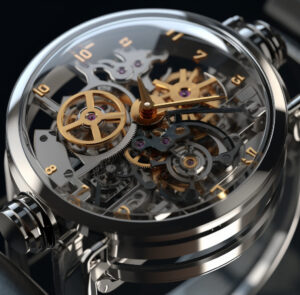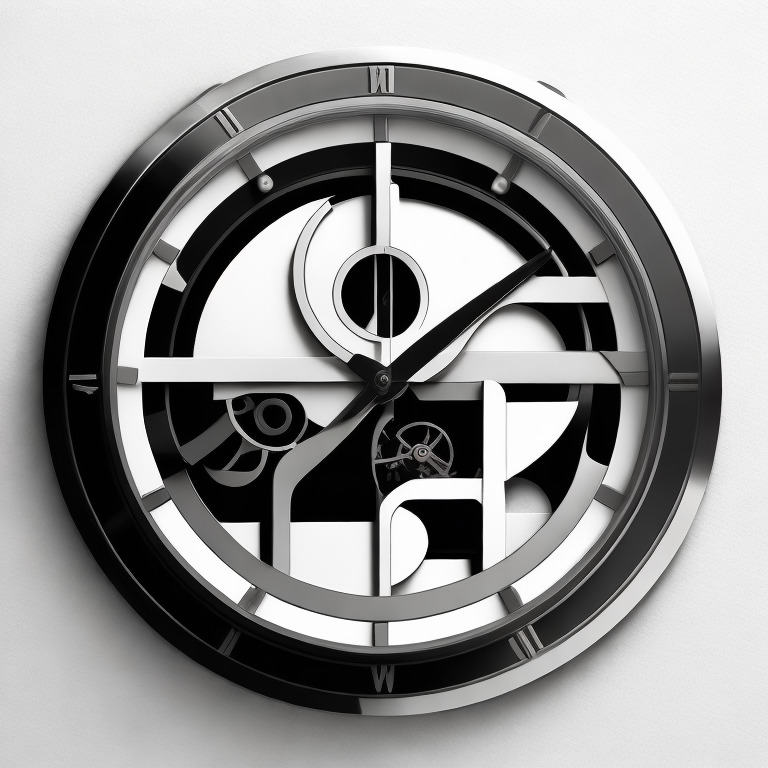
As the world of horology continues to evolve, we look toward the future with anticipation and excitement. In this chapter, we will explore the trends and developments that are shaping the industry, from technological advancements and the rise of independent watchmakers to the growing importance of sustainability and ethical sourcing. Amid these changes, we will also consider the enduring appeal of mechanical watches in the digital age.
Technological Advancements and Their Impact on Watchmaking
The watchmaking industry has always been at the forefront of innovation, with technological advancements playing a significant role in its evolution. The earliest mechanical clocks and watches were groundbreaking innovations that revolutionized timekeeping. The development of quartz movements in the 20th century further advanced timekeeping accuracy, and the integration of smart technologies in modern timepieces has brought new levels of functionality and convenience to the wrist.
In addition to advancements in timekeeping, materials science and manufacturing techniques have also had a profound impact on watchmaking. The use of new materials such as ceramics, carbon fiber, and titanium has allowed for lighter, more durable watches that can withstand extreme conditions. Precision machining and 3D printing have enabled the creation of intricate and complex components, allowing watchmakers to push the boundaries of design and engineering.
As watchmaking continues to evolve, we can expect to see even more exciting advancements in the future. From new materials and manufacturing techniques to cutting-edge smart technologies and beyond, the possibilities are endless. The only limit to what is possible in watchmaking is the imagination and innovation of the people who create these remarkable timepieces.
The Rise of Independent Watchmakers and Microbrands
The world of watchmaking has long been dominated by established brands with a rich history and legacy, but in recent years, a new wave of independent watchmakers and microbrands has emerged, offering collectors and enthusiasts an exciting and refreshing alternative. These smaller companies, often founded by passionate watchmakers or enthusiasts, pride themselves on their creativity, craftsmanship, and exclusivity.
Unlike larger brands, independent watchmakers and microbrands have the freedom to explore unconventional designs, materials, and techniques, resulting in timepieces that are truly one-of-a-kind. Many of these companies also offer limited-edition or bespoke watches, further adding to their exclusivity and desirability.
The rise of independent watchmakers and microbrands has been fueled by a growing community of watch collectors and enthusiasts who value individuality and personal expression. These collectors seek out watches that stand out from the crowd, that tell a unique story and reflect their individual tastes and preferences.
In addition to offering unique designs and limited editions, many independent watchmakers and microbrands also place a strong emphasis on sustainability and ethical practices. These companies often work with small-scale suppliers and use environmentally-friendly materials, ensuring that their watches are not only beautiful but also responsible.
The rise of independent watchmakers and microbrands has added a new dimension to the world of horology, expanding the possibilities and pushing the boundaries of what is possible in watchmaking. As these companies continue to innovate and captivate collectors and enthusiasts alike, it is clear that they will play an increasingly significant role in the future of the industry.
The Role of Sustainability and Ethical Sourcing in the Industry
The watchmaking industry has long relied on the extraction of precious metals and gemstones from the earth, as well as traditional manufacturing processes that can have a significant impact on the environment. However, in recent years, there has been a growing awareness of the need for sustainability and ethical sourcing in the industry.
One of the most significant developments in this area has been the responsible sourcing of precious materials. Many watch brands now have policies and initiatives in place to ensure that the gold, silver, diamonds, and other materials they use are sourced in a responsible and sustainable manner. This includes working with suppliers who meet specific environmental and social standards and implementing traceability programs that allow them to track the origin of their materials.
In addition to responsible sourcing, there has also been a shift towards the use of eco-friendly materials and manufacturing processes. This includes the development of alternative materials such as recycled plastics and ceramics, as well as the use of renewable energy sources to power manufacturing facilities. Some watch brands are even experimenting with 3D printing technology to reduce waste and increase efficiency.
Beyond environmental concerns, the watchmaking industry is also addressing ethical issues such as fair labor practices and human rights abuses. This includes ensuring that workers involved in the production of watches are treated fairly and provided with safe working conditions, as well as taking steps to prevent the use of conflict minerals in the supply chain.
As consumers become more conscious of the impact of their purchases, sustainability and ethical sourcing are becoming increasingly important factors in their buying decisions. The watchmaking industry’s response to this shift has been promising, with many brands taking steps towards greater responsibility and accountability. The continued focus on sustainability and ethical sourcing will undoubtedly shape the future of horology, leading to a more environmentally conscious and socially responsible industry.
The Enduring Appeal of Mechanical Watches in the Digital Age
Mechanical watches have a rich history that spans centuries, from the first pocket watches of the 16th century to the highly complex wristwatches of today. Despite the emergence of digital timekeeping devices, the enduring appeal of mechanical watches has remained steadfast. The intricate mechanisms and exquisite craftsmanship that go into creating a mechanical watch make it a true work of art, with a beauty and charm that cannot be replicated by digital devices.
In the digital age, the convenience and functionality of smartwatches and other digital devices cannot be denied. These devices offer a level of connectivity and integration with our daily lives that mechanical watches cannot match. However, for many watch enthusiasts and collectors, the emotional connection and appreciation for tradition that comes with owning a mechanical watch is unparalleled.
Mechanical watches require no external power source, relying on the winding of a spring or the motion of the wearer to keep time. The ticking of the balance wheel and the whirring of gears can be heard and felt, adding to the sensory experience of wearing a mechanical watch. This connection to the inner workings of the timepiece is part of what makes mechanical watches so special.
In addition to their technical and emotional appeal, mechanical watches also offer a sense of timelessness and longevity. A well-maintained mechanical watch can last for generations, becoming a cherished family heirloom and a symbol of enduring quality and craftsmanship.
Despite the challenges posed by the digital age, the mechanical watch industry continues to thrive. Independent watchmakers and established brands alike are producing innovative and intricate timepieces that capture the essence of horological artistry. And for collectors and enthusiasts, the mechanical watch remains a timeless symbol of the enduring appeal of human ingenuity, skill, and tradition.
The evolution of movements
Amidst the dynamic horological landscape, watch movements, the heart of the timepiece, are seeing intriguing advancements. Hybrid movements, for example, are gaining traction. By marrying the reliability of quartz with the beauty and craftsmanship of mechanical movements, these innovations offer an enticing combination. Seiko’s Spring Drive technology, for instance, utilizes a traditional mainspring for power but harnesses a quartz crystal oscillator for precision.
In response to sustainability, manufacturers are exploring renewable energy sources for powering watch movements. A prominent example is Citizen’s Eco-Drive technology that harnesses light, whether natural or artificial, to power watches. By reducing reliance on batteries, the environmental impact is significantly decreased.
Silicon, with its anti-magnetic properties, shock resistance, and reduced need for lubrication, is becoming a popular material choice for movement components. Prestigious brands such as Rolex, Patek Philippe, and Ulysse Nardin are pioneering the use of silicon to enhance the longevity and reliability of their movements. Simultaneously, other advanced materials like carbon composites and sapphire are being incorporated into movement construction, expanding the horizons of precision, durability, and weight.
As technology continues to evolve, so does its application in watchmaking. 3D printing, as already noted, though nascent in this field, has the potential to revolutionize the production of watch components, not just the raw materials. This cutting-edge technique enables printing of incredibly precise components, creating opportunities for unprecedented complexity and design in movement construction.
Lastly, the competitive spirit of the industry is alive and well in the ongoing research and development initiatives. Zenith, for example, with its Defy Lab model, is focused on enhancing the mechanical oscillator itself, the core component regulating timekeeping, with an aim for unmatched accuracy. In addition, innovations like TAG Heuer’s concept Mikrogirder watch, which uses a linear oscillator rather than a traditional balance wheel, achieve a mind-boggling 7.2 million vibrations per hour, translating to accuracy up to 5/10,000th of a second.
While these advancements are still in experimental phases, they represent the relentless pursuit of precision and perfection in horology. The world of watch movements, thus, continues to witness a fascinating interplay of tradition and innovation. With breakthroughs in materials science, embrace of renewable energy sources, and the integration of emerging technology, the future of watch movements is as promising as it is exciting.
The future of horology promises to be a thrilling and dynamic landscape, as the industry continues to evolve and adapt to the changing world. With a blend of innovation, creativity, and a renewed focus on sustainability and ethics, the watchmaking industry will undoubtedly continue to captivate and inspire for generations to come.

